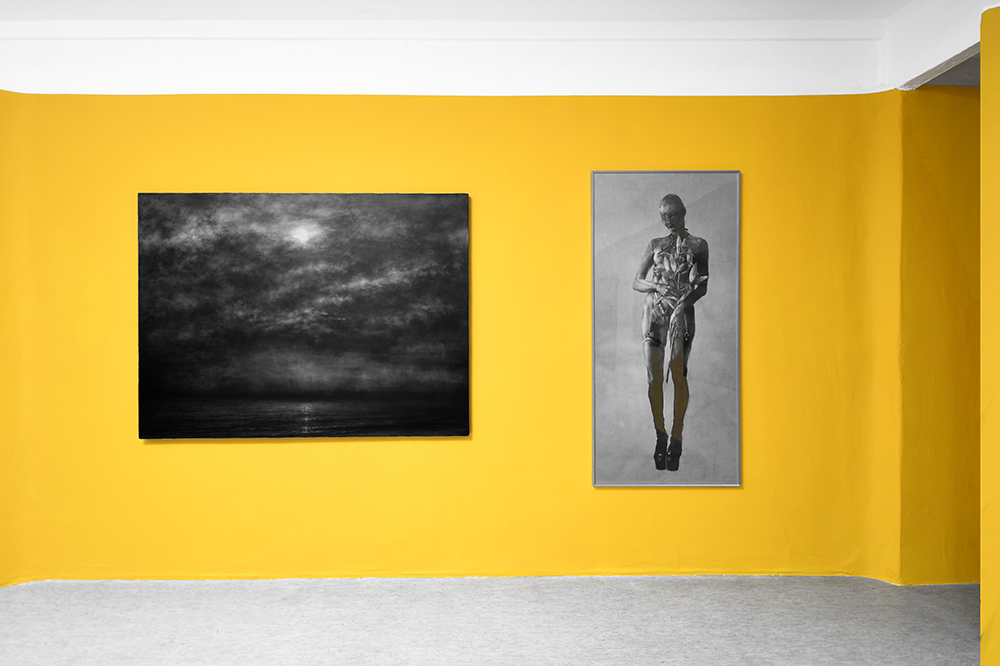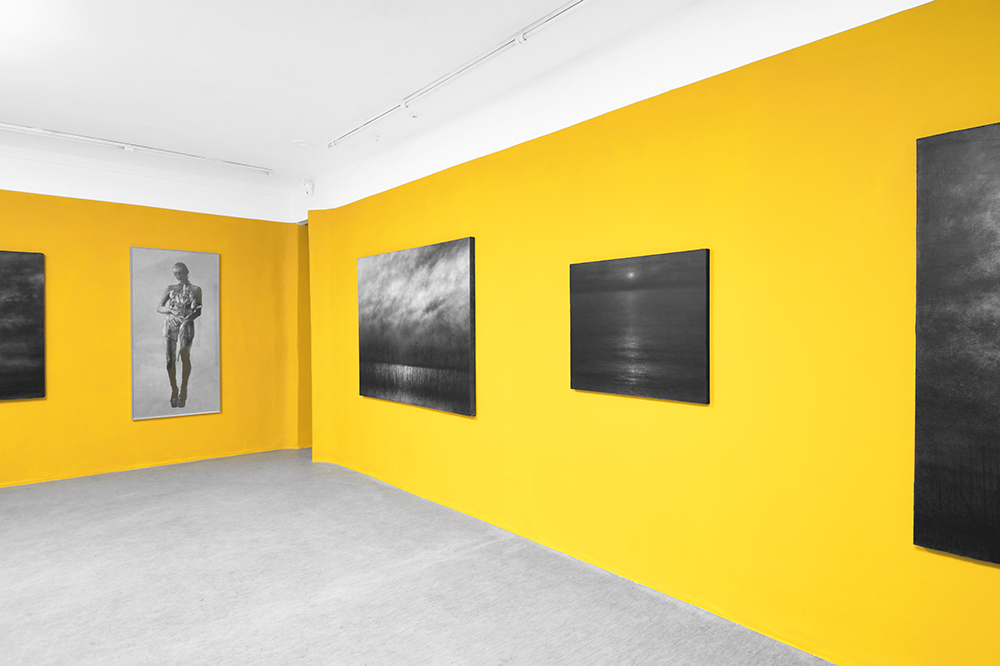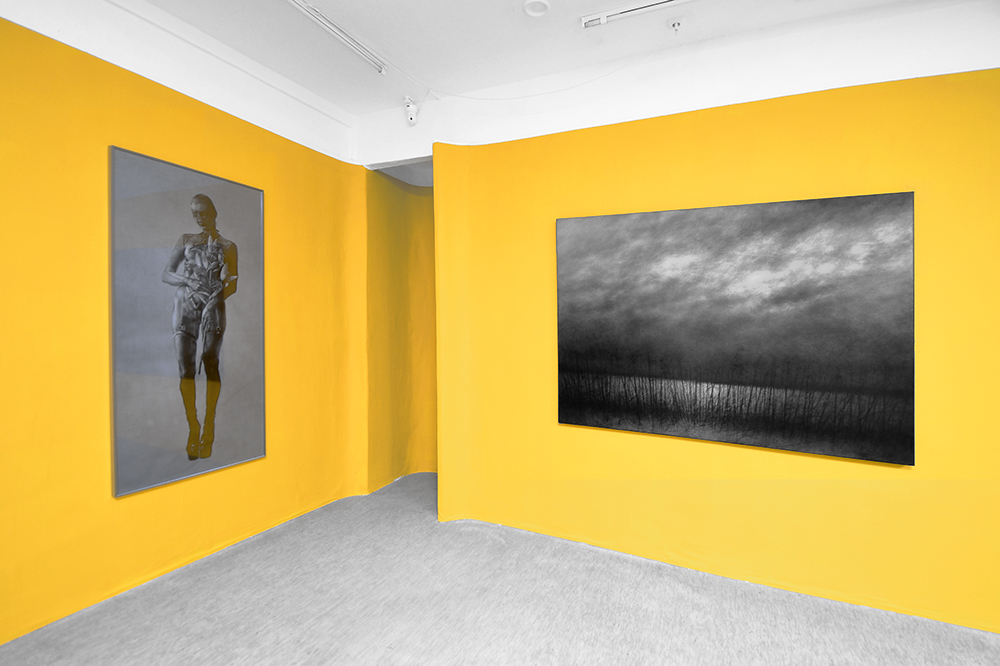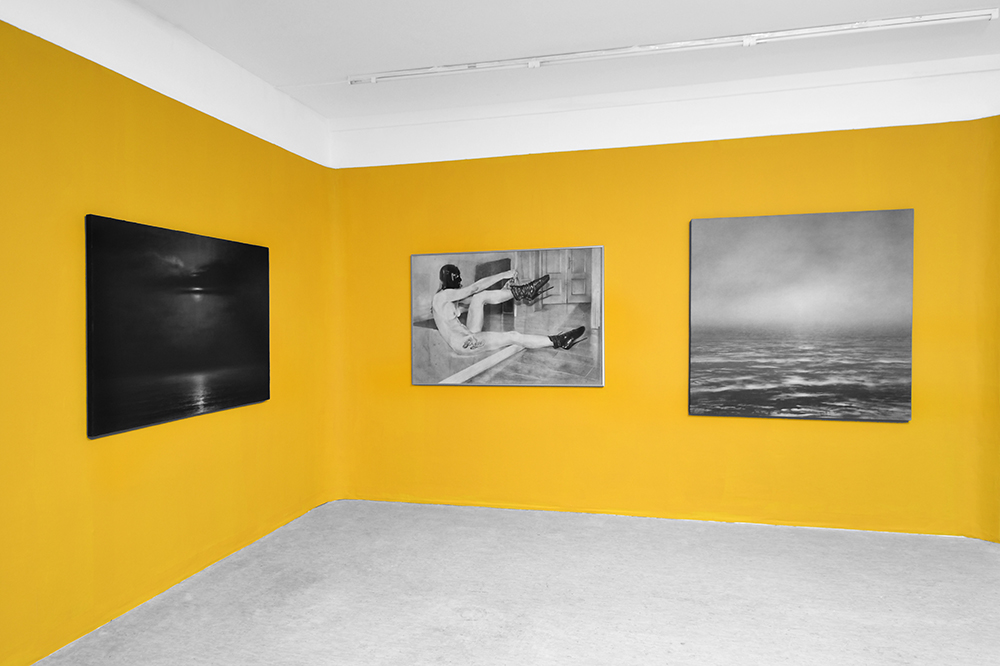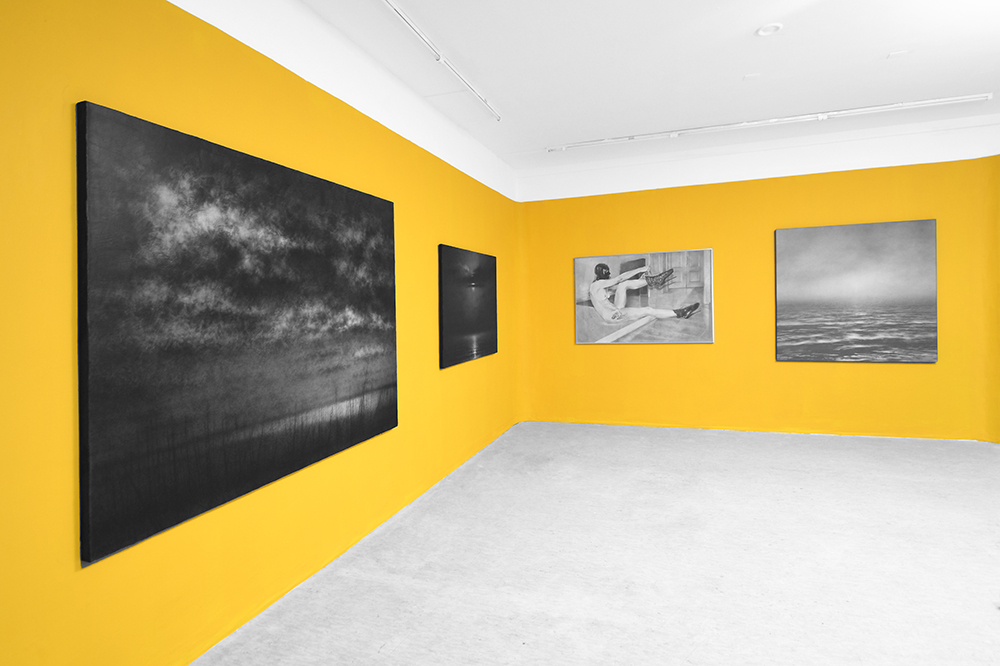Past
Danja Akulin, Magdalena Piech
In Darkness Let Me Dwell
To view or download the online version of the exhibition catalog please click here
To purchase the printed version of the catalog please click here
To view the show on Artsy please click here
Opening | Thursday, January 19th | 5 - 9 pm
Duration | January 20th to February 9th
In the exhibition "In Darkness Let Me Dwell" the works of Magdalena Piech and Danja Akulin are brought together in one exhibition. Both artists operate in the black and white medium of pencil and charcoal drawing. The absence of color decisively contributes to the crystalline tone of the works, so that the viewer does not even consider the idea of study, reduction or preliminary drawing. The pictured light resembles the light at dusk or in the clearing of the night. Even a neon light is imaginable. It resembles a light that is either so dim or so glaring that the eyes of the observer are not yet able to detect color nuances, but the brain wants to relish associate the echoing of colors into the dark gray shimmer. When in Danja Akulin's work the moon appears from behind the misty evening sky, thick with clouds, the reflected light radiates in all spectral colors until it is completely absorbed in the black of the night and the clouds, like the sound in an anechoic room. Protagonists in Magdalena Piech's drawings wear a black latex suit reminiscent of these dark night clouds, which, just like the moon, reflects the light in some places and makes it shine spectrally, before appearing black and deep in the same place as if shrouded in clouds when the wearer turns slightly.
Danja Akulin draws mysterious pictures. The impression that one cannot see something particular in focus, although the details are often drawn with hyperprecision, or the images are composed of the finest nervous lines, nevertheless the appearance seems somewhat blurred, as if one were wavering in a world between insomnia and dream and, despite the clear spatiality, losing orientation, no longer knowing where the back is and where the front is. Even pictures that pretend to be a clear avenue, bordered with evenly spaced trees are disconcerting in that the trees have grown very accurately evenly and that the horizon increases in blurriness as soon as one wants to look at it more closely.
The floating feeling, similar to a dream, is caused more by the things that cannot be seen, that are conspicuous by their absence in an almost orderly void. A dead straight dirt road is the only thing that points to other people. Where they are remains completely unclear. No light of a fire or a dwelling breaks through the dark moonlit night, no white canvas gleams on the horizon of the sea, nothing drifts on the sea, nothing stands abandoned on the field. As if under amnesia, the viewer slips into a protagonist who finds himself in these landscapes, who is surrounded by a feeling on the brink, mixed with confidence, calm, self-assurance and boundless loneliness of being the last, the threatened. The situation remains undecided and timeless, as is the peculiarity of dreams.
The protagonists of the exhibited paintings by Magdalena Piech transform. In one picture we can observe a naked woman getting dressed. She is already wearing a black latex mask, she laces up her black platform ankle boots and then the transformation is probably almost shot. In another picture, a similar figure, motionless within herself, holds white lilies with the blossoms still closed. This figure, too, stands still on the tipping point between two extreme feelings, which is revealed most tangibly in the symbolic use of the lily. Thus, florists advertise with the symbolism of the lily, which stands for love and fertility, purity and loveliness, but equally for transience, mourning and death. The protagonists wear tight latex suits, strappy corsages, masks, high heels and lilies. Poor in movement, inhibited, they rest in their posture, appearing mobile only through an external will, which expresses itself with ropes and knots, via mobility and rigidity. The living performs its play inwards. The protagonists do not act or react with their bodies in space, they rather transform their bodies into a vessel in which the living blossoms, protected and exposed at the same time.
One will inevitably wake up from a dream, one will inevitably take off a closed suit at some point. The moon will disappear at the end of the night and the sun will reach its highest point during the day. Reality consists of cycles, it remains dynamic and demands change. The dream, whether at night or forgetting itself during the day, the daydream, provides the illusion that time loses its constraint. Time freezes, a second can become an eternity in which reality is not the throbbing clockwork that dictates the order of the beat to the inner life of the soul. Instead, she lifts the soul’s life in the dream into suspension, lulling it into ambiguity without constraint. Through the mask's visual apertures, one sees the world that the protagonists see enclosed in motionlessness, while the soul presents its timeless life of its own in the mirror of its self.


